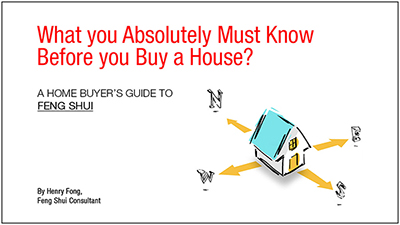Does our sitting and sleeping direction affect us?
The answer is a resounding yes in Feng Shui. In both the Eight Mansions and Flying Star system, there are rules governing them. In this article I will share with you the method from the Eight Mansions system.
In the Eight Mansions system, everyone of us has a Kua number that is calculated from our date of birth and sex. There are eight numbers from 1 to 4 and 6 to 9. The numbers 1,3,4 and 9 belong to a group called the East Group (also called East Life) while the remaining numbers 2,6,7 and 8 belong to another group called the West Group (also known as West Life).
Each Kua has a set of 4 auspicious directions and 4 inauspicious directions. The four auspicious directions are Sheng Qi (Prosperity), Tian Yi (Health), Nen Yian (Relationship) and Fu Wei (Mild Good Luck). The four inauspicious directions are Ho Hai (Mild Bad Luck), Wu Gui (Quarrel), Liu Sha (Seperation) and Jue Ming (Total Loss).
You can find out which group you belong to and your auspicious directions by using the Kua Number Chart at
http://www.henryfong.com/kua.htm
The objective is to find a sitting and sleeping direction that matches our Kua. This apply to activities where you spend an extended amount of time on it, e.g. working at your desk, on the computer, watching TV, sleeping etc.
Let me illustrate with an example. Let’s say your Kua is 7. Your favourable directions are NW, SW, NE and W. If you want great success and prosperity then you should sit facing NW (looking in the direction NW). You should also try to sleeping with the top of your head pointed towards the direction NW (meaning that your feet is pointing in the opposite direction of SE).
If you are currently facing difficulties such as misfortune, illnesses, accidents, legal entanglement, separation or divorce etc and you discover that you are sleeping facing one of the four inauspicious directions especially Liu Sha and Jue Ming, you must change to a better sitting and sleeping direction. Pronto! It can only get better.
The Flying Star system also have rules governing the sitting and sleeping direction and you may get different results. The important thing to remember is that you cannot mix the systems. For these formulas to be effective you must apply the rules from one system.












